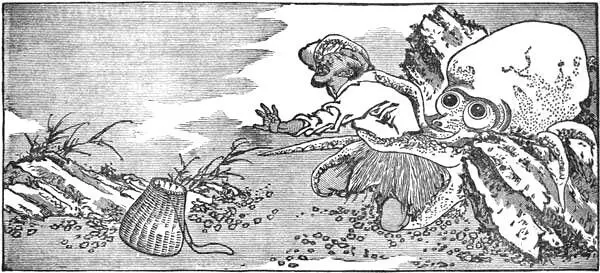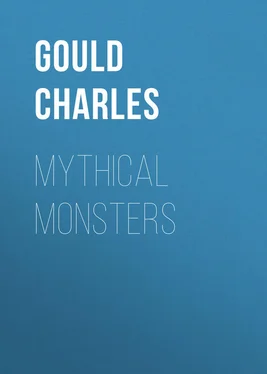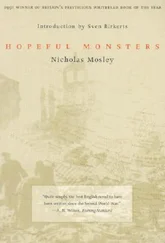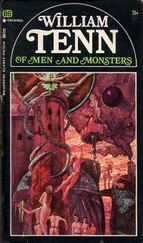Charles Gould - Mythical Monsters
Здесь есть возможность читать онлайн «Charles Gould - Mythical Monsters» — ознакомительный отрывок электронной книги совершенно бесплатно, а после прочтения отрывка купить полную версию. В некоторых случаях можно слушать аудио, скачать через торрент в формате fb2 и присутствует краткое содержание. Жанр: Мифы. Легенды. Эпос, Природа и животные, foreign_antique, foreign_prose, на английском языке. Описание произведения, (предисловие) а так же отзывы посетителей доступны на портале библиотеки ЛибКат.
- Название:Mythical Monsters
- Автор:
- Жанр:
- Год:неизвестен
- ISBN:нет данных
- Рейтинг книги:5 / 5. Голосов: 1
-
Избранное:Добавить в избранное
- Отзывы:
-
Ваша оценка:
- 100
- 1
- 2
- 3
- 4
- 5
Mythical Monsters: краткое содержание, описание и аннотация
Предлагаем к чтению аннотацию, описание, краткое содержание или предисловие (зависит от того, что написал сам автор книги «Mythical Monsters»). Если вы не нашли необходимую информацию о книге — напишите в комментариях, мы постараемся отыскать её.
Mythical Monsters — читать онлайн ознакомительный отрывок
Ниже представлен текст книги, разбитый по страницам. Система сохранения места последней прочитанной страницы, позволяет с удобством читать онлайн бесплатно книгу «Mythical Monsters», без необходимости каждый раз заново искать на чём Вы остановились. Поставьте закладку, и сможете в любой момент перейти на страницу, на которой закончили чтение.
Интервал:
Закладка:

Fig. 1. – Fisherman attacked by Octopus.
( Facsimile from a drawing by Hokusai, a celebrated Japanese artistwho lived about the beginning of the present century. )
Victor Hugo was ridiculed for having exceeded the bounds of poetic license when he produced his marvellous word-painting of the devil-fish, and described a man as becoming its helpless victim. The thing was derided as a monstrous impossibility; yet within a few years were discovered, on the shores of Newfoundland, cuttle-fishes with arms extending to thirty feet in length, and capable of dragging a good-sized boat beneath the surface; and their action has been reproduced for centuries past, as the representation of a well-known fact, in net sukes (ivory carvings) and illustrations by Japanese artists. 15
Before the days of Darwinism, what courage was requisite in a man who propounded any theory a little bit extravagant! Hark how, even less than twenty years ago, the ghost of the unfortunate Lord Monboddo had bricks of criticism pelted at it, half earnestly, half contemptuously, by one of our greatest thinkers, whose thought happened to run in grooves different from those travelled in by the mind of the unfortunate Scotchman.
“Lord Monboddo 16had just finished his great work, by which he derives all mankind from a couple of apes, and all the dialects of the world from a language originally framed by some Egyptian gods, when the discovery of Sanskrit came on him like a thunderbolt. It must be said, however, to his credit, that he at once perceived the immense importance of the discovery. He could not be expected to sacrifice his primordial monkeys or his Egyptian idols, &c.”
And again: “It may be of interest to give one other extract in order to show how well, apart from his men with, and his monkeys without, tails, Lord Monboddo could sift and handle the evidence that was placed before him.”
Max Müller also furnishes us with an amazing example of scepticism on the part of Dugald Stewart. He says 17: “However, if the facts about Sanskrit were true, Dugald Stewart was too wise not to see that the conclusions drawn from them were inevitable. He therefore denied the reality of such a language as Sanskrit altogether, and wrote his famous essay to prove that Sanskrit had been put together, after the model of Greek and Latin, by those archforgers and liars, the Brahmans, and that the whole of Sanskrit literature was an imposition.”
So Ctesias attacked Herodotus. The very existence of Homer has been denied, and even the authorship of Shakespeare’s plays questioned. 18
We are all familiar enough now with the black swan, but Ovid 19considered it as so utterly impossible that he clinched, as it were, an affirmation by saying, “If I doubted, O Maximus, of thy approval of these words, I could believe that there are swans of the colour of Memnon” [ i. e. black]; and even so late as the days of Sir Thomas Browne, we find them classed by him with flying horses, hydras, centaurs, harpies, and satyrs, as monstrosities, rarities, or else poetical fancies. 20
Now that we have all seen the great hippopotamus disport himself in his tank in the gardens of the Zoological Society, we can smile at the grave arguments of the savant who, while admitting the existence of the animal, disputed the possibility of his walking about on the bed of a river, because his great bulk would prevent his rising again. 21But I daresay it passed muster in his days as a very sound and shrewd observation, just as, possibly, but for the inconvenient waggery of Peter Pindar, might have done the intelligent inquiry, which he records, after the seam in the apple-dumpling.
Poor Fray Gaspar de Jan Bernardine who, in 1611, undertook the journey by land from India to Portugal, was unfortunate enough to describe the mode in which the captain of the caravan communicated intelligence to Bagdad by carrier pigeon. “He had pigeons whose young and nests were at his house in that city, and every two days he let fly a pigeon with a letter tied to its foot containing the news of his journey. This account met with but little belief in Europe, and was treated there as a matter of merriment.” 22
The discredit under which this traveller fell is the more surprising because the same custom had already been noted by Sir John Mandeville, who, in speaking of Syria and adjacent countries, says: “In that contree, and other contrees beyond, thei have custom, whan thei schulle usen warre, and when men holden sege abouten Cytee or Castelle, and thei withinen dur not senden messagers with lettres frō Lord to Lord for to ask Sokour, thei maken here Lettres and bynden hem to the Nekke of a Colver and leten the Colver flee, and the Colveren ben so taughte, that thei flun with the Lettres to the very place that men wolde send hem to. For the Colveres ben norrysscht in the Places Where thei been sent to, and thei senden them there, for to beren here Lettres, and the Colveres retournen agen, where as thei ben norrischt, and so thei dou commonly.”
While, long before, Pliny had referred to it in his Natural History 23as follows: “In addition to this, pigeons have acted as messengers in affairs of importance. During the siege of Mutina, Decimus Brutus, who was in the town, sent despatches to the camp of the Consuls, fastened to pigeons’ feet. Of what use to Antony, then, were his entrenchments? and all the vigilance of the besieging army? his nets, too, which he had spread in the river, while the messenger of the besieged was cleaving the air?”
The pace of railways; steam communication across the Atlantic; the Suez Canal 24; were not all these considered in former days to be impossible? With these examples of failure of judgment before us, it may be fairly asked whether, in applying our minds to the investigation of the reality of creatures apparently monstrous, we duly reflect upon the extraordinary, almost miraculous, events which incessantly occur in the course of the short existence of all animated nature? Supposing the history of insects were unknown to us, could the wildest imagination conceive such a marvellous transformation as that which takes place continually around us in the passage from the larva through the chrysalis to the butterfly? or human ingenuity invent one so bizarre as that recorded by Steenstrup in his theory of the alternation of generation?
We accept as nothing marvellous, only because we see them daily, the organization and the polity of a community of ants; their collaboration, their wars, and their slaveries have been so often stated that they cease to astonish. The same may be said of the marvellous architecture of birds, their construction of houses to live in, of bowers to play in, and even of gardens to gratify their sense of beauty. 25
We admire the ingenious imagination of Swift, and essayists dwell upon his happy conceits and upon the ability with which, in his celebrated work, he has ordered all things to harmonise in dimensions with the enlarged and reduced scales on which he has conceived the men and animals of Brobdignag and Lilliput. So much even has this quaint idea been appreciated, that his story has achieved a small immortality, and proved one of the numerous springs from which new words have been imported into our language. Yet the peculiar and essential singularities of the story are quite equalled, or even surpassed, by creatures which are, or have been, found in nature. The imaginary diminutive cows which Gulliver brought back from Lilliput, and placed in the meadows at Dulwich, are not one bit more remarkable, in respect to relative size, than the pigmy elephant ( E. Falconeri ) whose remains have been found in the cave-deposits of Malta, associated with those of pigmy hippopotami, and which was only two feet six inches high; or the still existing Hippopotamus ( Chæropsis ) liberiensis , which M. Milne Edwardes 26figures as little more than two feet in height.
Читать дальшеИнтервал:
Закладка:
Похожие книги на «Mythical Monsters»
Представляем Вашему вниманию похожие книги на «Mythical Monsters» списком для выбора. Мы отобрали схожую по названию и смыслу литературу в надежде предоставить читателям больше вариантов отыскать новые, интересные, ещё непрочитанные произведения.
Обсуждение, отзывы о книге «Mythical Monsters» и просто собственные мнения читателей. Оставьте ваши комментарии, напишите, что Вы думаете о произведении, его смысле или главных героях. Укажите что конкретно понравилось, а что нет, и почему Вы так считаете.











